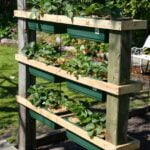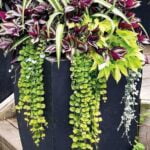Are you looking to add some natural, rugged charm to your outdoor space? In this article, we will explore landscape ideas with boulders and how they can be incorporated into your garden or yard. Boulders are a versatile and eye-catching element that can bring a unique visual and functional appeal to any landscape design. Whether you’re aiming for a naturalistic look or seeking practical features, boulders offer endless possibilities for enhancing outdoor spaces.
When it comes to landscape design, boulders can play a crucial role in creating focal points, adding texture, and providing structural elements. From creating retaining walls to accentuating plantings or water features, the use of boulders in landscaping can greatly impact the overall aesthetic of a space. By incorporating different types of boulders and designing with them strategically, you can achieve an impressive and visually appealing outdoor environment that complements your home or property.
In the following sections, we will delve into the different types of boulders commonly used in landscaping, explore various design techniques and practical applications for boulders, discuss how to create natural-looking landscapes with them, address maintenance considerations for preserving their appeal over time, and showcase real-life examples of successful landscape designs that effectively utilize boulders.
Whether you’re aiming for a desert-inspired oasis or a coastal retreat, there are numerous ways to incorporate these natural elements into different types of landscapes.
So let’s dive into the world of landscape ideas with boulders and discover how they can elevate your outdoor space.
Types of Boulders
When it comes to landscape design, boulders are a versatile and impactful element that can add visual interest and dimension to any outdoor space. There are several different types of boulders commonly used in landscaping, each with its own unique characteristics and features. From granite to sandstone to limestone, the type of boulder chosen for a specific landscape project can have a significant impact on the overall aesthetic and functionality of the design.
Characteristics and Features
Granite boulders, for example, are known for their durability and resistance to weathering, making them ideal for use in retaining walls or as decorative accents. On the other hand, sandstone boulders offer a softer look and feel, often featuring interesting textures and color variations that can add warmth to a landscape design. Limestone boulders are prized for their natural beauty and versatility, with a wide range of colors and patterns to choose from.
Considerations for Choosing
When selecting the right type of boulder for a specific landscape project, several considerations come into play. Factors such as color, size, shape, texture, and overall aesthetic compatibility with the surrounding environment should all be taken into account. Additionally, the intended use of the boulder (e.g. as a focal point or functional element) as well as local availability and cost should also be considered when making this important decision.
Incorporating these different types of boulders into landscape designs requires careful planning and consideration in order to achieve the desired effect. Whether used as accents within garden beds or as focal points in larger hardscape features, choosing the right type of boulder is essential for creating visually appealing and cohesive outdoor spaces.
By understanding the unique characteristics and features of each type of boulder available, homeowners and landscape designers can make informed decisions about which boulders will best suit their individual projects.
Designing With Boulders
When it comes to landscape design, boulders can be an excellent addition to create visually appealing and unique outdoor spaces. Whether used as focal points, retaining walls, or naturalistic elements, incorporating boulders into landscape design can add a sense of rugged beauty and timeless appeal. Here are some tips and guidelines for designing with boulders:
- Consider the size and shape of the boulders: When selecting boulders for landscape design, it’s important to consider their size, shape, and color. Large, irregularly shaped boulders can make a bold statement as focal points, while smaller, more rounded boulders can be used to line pathways or create accents within garden beds.
- Create focal points using boulders: Boulders can be strategically placed to draw attention to specific areas in the landscape. Whether used individually or in groupings, they can serve as visual anchors that add interest and depth to the overall design.
- Integrate boulders with plants and other landscape elements: To achieve a harmonious look, consider combining boulders with plants and other hardscape features such as gravel or pebbles. This combination creates contrast and texture, adding dimension to the landscape.
Additionally, when designing with boulders, it’s essential to take into account the surrounding environment and the overall aesthetic goals of the project. By carefully considering these factors and following these guidelines, homeowners and landscapers can create stunning outdoor spaces that showcase the beauty and versatility of natural stone elements.
Ultimately, integrating boulders into landscape design offers a wide range of creative possibilities for transforming outdoor spaces into inviting retreats that reflect both natural beauty and artistic expression. With thoughtful planning and implementation, incorporating these rugged elements can elevate any landscape design while adding character and charm that lasts for years to come.
Boulders as Functional Elements
Boulders play a significant role in landscaping by serving as both aesthetic and functional elements. Their natural beauty and versatility make them an ideal choice for various landscape projects, offering practical uses beyond just visual appeal. Here are some creative ways to utilize boulders as functional elements in landscaping:
1. Retaining Walls:
Boulders can be used to create sturdy and visually striking retaining walls in the landscape. Their natural texture and irregular shapes add a unique charm to the design while effectively preventing soil erosion and supporting elevated terrain.
2. Seating Areas:
Large boulders can be strategically placed to create natural seating areas within the landscape. Whether arranged around a fire pit or integrated into a garden space, boulder seating provides a rustic and organic alternative to traditional outdoor furniture.
3. Water Features:
Boulders can be incorporated into water features such as fountains, ponds, or streams, adding a sense of naturalistic beauty to the landscape. They can serve as anchor points for cascading waterfalls or create visually interesting formations within aquatic environments.
Incorporating boulders into the landscape not only enhances its visual appeal but also adds functional elements that contribute to the overall design’s practicality and sustainability. Whether used for creating retaining walls, seating areas, or water features, boulders bring a unique blend of aesthetics and functionality to any outdoor space.
Using Boulders for Natural-Looking Landscapes
Creating a natural-looking landscape with boulders involves more than just randomly scattering the rocks around. It requires thoughtful design and placement to ensure that the boulders blend seamlessly into the surrounding environment. When done correctly, boulders can add a sense of character and authenticity to a landscape, mimicking the rugged beauty of nature.
Techniques for Creating Natural-Looking Landscapes With Boulders
1. Mimic Natural Formations
When incorporating boulders into a landscape, it’s important to mimic the natural formations commonly found in the area. This means paying attention to things like size, shape, and arrangement. For example, in a mountainous region, using large, jagged boulders would be more appropriate than smooth, rounded ones commonly found in riverbeds.
2. Consider Scale and Proportion
Another important consideration is scale and proportion. Boulders should be proportional to the size of the landscape and other elements within it. A single massive boulder might look out of place in a small backyard but could serve as a striking focal point in a larger garden or open space.
3. Blend With Native Plants
To create a cohesive and natural-looking landscape, it’s essential to integrate boulders harmoniously with native plants. Placing smaller rocks at the base of shrubs or using them as edging for flower beds can help create a seamless transition between the planted areas and the rocky features.
How to Blend Boulders Seamlessly Into the Surrounding Environment
In order to blend boulders seamlessly into their surroundings, it’s essential to consider factors such as color, texture, and overall aesthetic appeal. Choosing boulders that complement the existing terrain will help create an authentic look that appears as though they’ve always been part of the landscape.
One effective technique for blending boulders into their surroundings is by partially burying them so that only a portion of each rock is visible above ground. This mimics how many large stones appear naturally within various environments, like dry riverbeds or rolling hillsides.
Moreover, strategically placing smaller rocks or gravel around the base of larger boulders can help further integrate them into the landscape by softening their edges and creating realistic transitions between rock and soil surfaces.
Maintenance and Care of Boulders
Boulders are a popular and versatile landscaping element that can add visual interest, texture, and dimension to outdoor spaces. However, it is important to properly maintain and care for boulders in order to preserve their aesthetic appeal over time. By following some simple tips and guidelines, you can ensure that your boulders remain an attractive and functional part of your landscape design for years to come.
One important aspect of maintaining boulders in the landscape is regular cleaning. Over time, boulders can accumulate dirt, debris, and other organic matter, which can detract from their natural beauty. Using a mixture of water and mild soap, gently scrub the surface of the boulders with a soft brush to remove any buildup. Avoid using harsh chemicals or abrasive materials, as these can damage the surface of the boulder.
In addition to cleaning, it’s also important to inspect boulders for any signs of damage or wear. Cracks, chips, or other imperfections can not only detract from the appearance of the boulder but may also pose safety hazards in the landscape.
If you notice any damage, consult with a professional landscaper or stonemason who can assess the situation and recommend appropriate repairs. Proper maintenance and care will help ensure that your boulders continue to enhance the overall aesthetic of your landscape design.
| Maintenance Tips | Cleaning Guidelines |
|---|---|
| Regularly inspect boulders for damage | Use mild soap and water for cleaning |
| Avoid using harsh chemicals or abrasive materials | Gently scrub with a soft brush |
Boulders in Different Types of Landscapes
Boulders can be a significant element in various types of landscapes, from desert settings to coastal areas and mountain regions. The use of boulders in landscaping can create stunning and unique features that complement the natural surroundings. In desert landscapes, boulders can mimic the rocky outcrops found in the arid environment, adding visual interest and texture to the overall design.
In coastal areas, boulders can be used to create naturalistic barriers or enhance the rugged beauty of the shoreline. Boulders are also a common feature in mountain landscapes, where they add a sense of grandeur and strength to the overall design.
When incorporating boulders into different types of landscapes, it is important to consider factors such as climate, geography, and existing vegetation. In desert landscapes, for example, choosing boulders with earthy tones and rugged textures can help them blend seamlessly with the surrounding environment. Similarly, in coastal areas, selecting weather-resistant boulders that can withstand saltwater exposure is crucial for longevity.
In mountainous regions, using locally-sourced boulders that match the geological characteristics of the area can enhance the authenticity of the landscape design. By carefully selecting and siting boulders based on their natural surroundings, landscape designers can create cohesive and visually striking compositions that celebrate the unique features of each landscape type.
| Types of Landscapes | Considerations for Boulders |
|---|---|
| Desert | Choose earthy-toned boulders with rugged textures; consider xeriscaping techniques |
| Coastal | Select weather-resistant boulders to withstand saltwater exposure; utilize boulder groupings for naturalistic barriers |
| Mountainous | Use locally-sourced boulders that match geological characteristics; create designs that celebrate natural rock formations |
Case Studies and Inspirational Examples
In conclusion, boulders are an incredibly versatile and impactful element in landscape design. They not only add visual interest and texture to outdoor spaces but also serve practical purposes such as erosion control, retaining walls, and water features. By choosing the right type of boulder and strategically placing them in the landscape, it is possible to create stunning focal points and natural-looking environments.
When considering landscape ideas with boulders, it is important to take into account the different types of boulders available and their characteristics. From granite to sandstone, each type of boulder offers unique textures, colors, and shapes that can be carefully selected to complement the overall design scheme. Additionally, proper maintenance and care of boulders are essential to preserve their aesthetic appeal over time, ensuring that they continue to enhance the landscape for years to come.
As demonstrated through the case studies and inspirational examples presented in this article, there are countless ways to incorporate boulders into landscape design successfully. Whether it’s creating a desert oasis or a mountain retreat, boulders can be used to seamlessly blend into any type of environment while adding a touch of natural beauty.
By drawing inspiration from these real-life examples, homeowners and landscapers can gain valuable insight into how to maximize the impact of boulders in their outdoor spaces.
Frequently Asked Questions
How Do You Landscape With Big Boulders?
Landscaping with big boulders can add a dramatic and natural touch to your outdoor space. To landscape with big boulders, it’s important to plan out the placement and size of the boulders.
Consider using different sizes and shapes to create visual interest, and place them strategically in areas that will enhance the overall design of your landscape. You can also use boulders to create focal points or as functional elements such as seating or retaining walls.
Why Do People Put Boulders in Their Yard?
People often put boulders in their yard for both aesthetic and practical reasons. From an aesthetic standpoint, boulders can add texture, depth, and character to the landscape, creating a visually appealing focal point or adding a natural element to the design.
Practically, boulders can be used as barriers for erosion control, to retain soil on slopes, or to define boundaries within a yard. They also require little maintenance compared to other landscaping features.
How Do You Landscape a Steep Hill With Rocks?
Landscaping a steep hill with rocks requires careful planning and consideration for both the aesthetics and functionality of the design. Using rocks or boulders strategically can help prevent erosion on steep slopes, create terraced planting areas, or work as natural retaining walls.
When landscaping a steep hill with rocks, it’s essential to consider safety measures such as proper drainage and stability of the rock placements – this may require professional advice or assistance depending on the scale of the project.

Welcome to my gardening blog! I am passionate about plants and enjoy sharing my knowledge and experiences with others. In this blog, I will write about everything related to gardening, from tips on how to get started to updates on my own garden projects.





